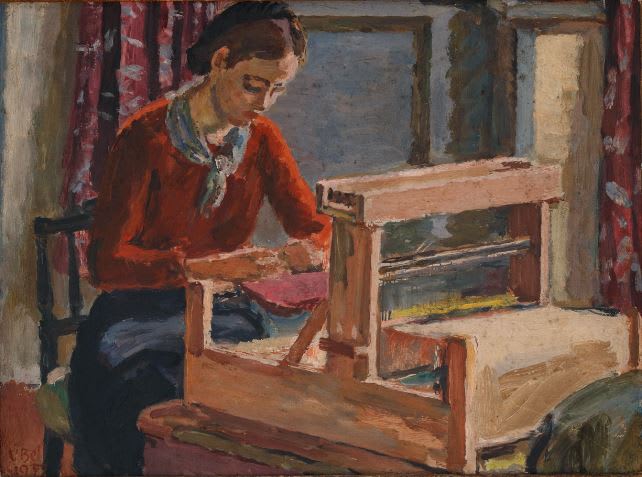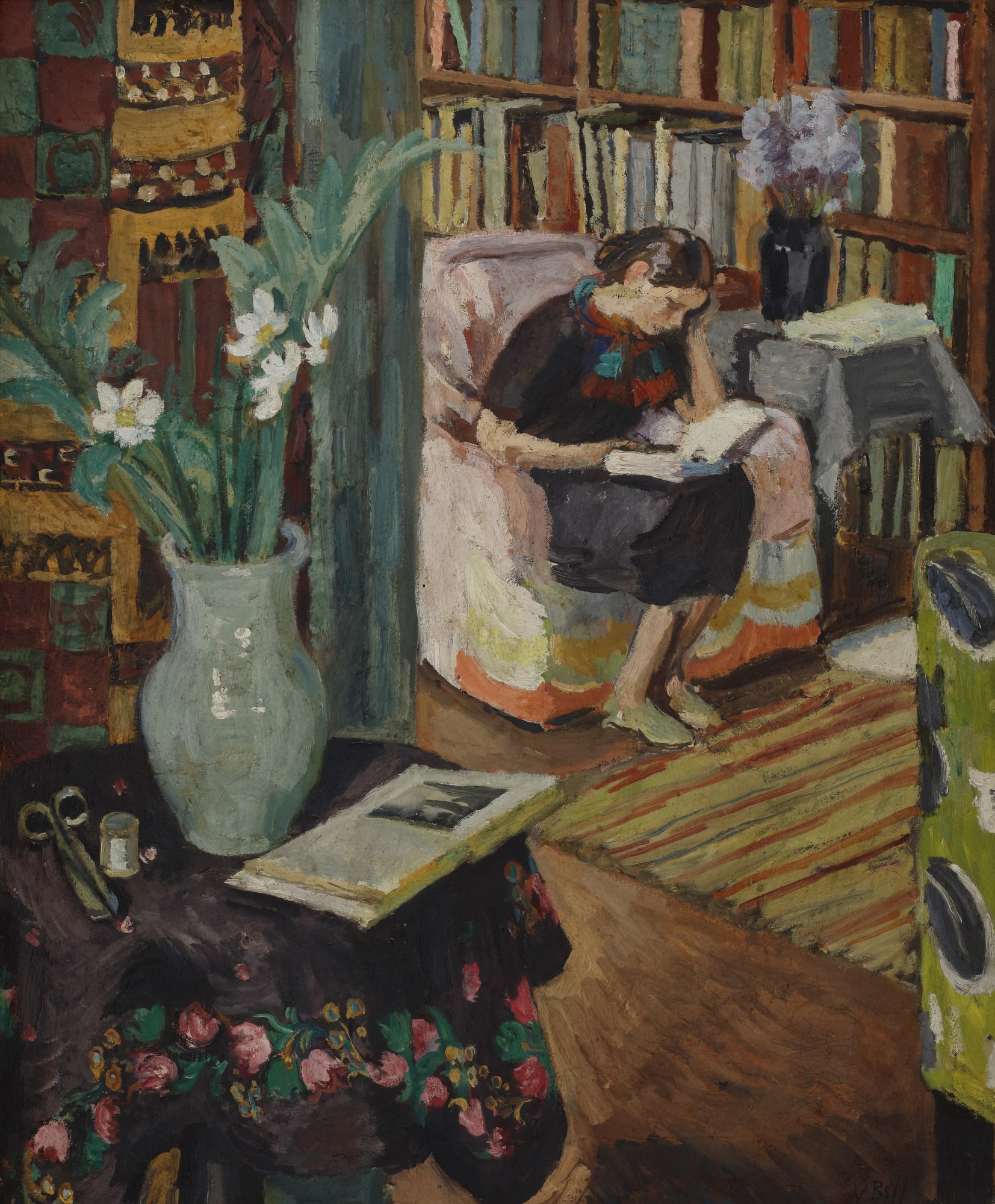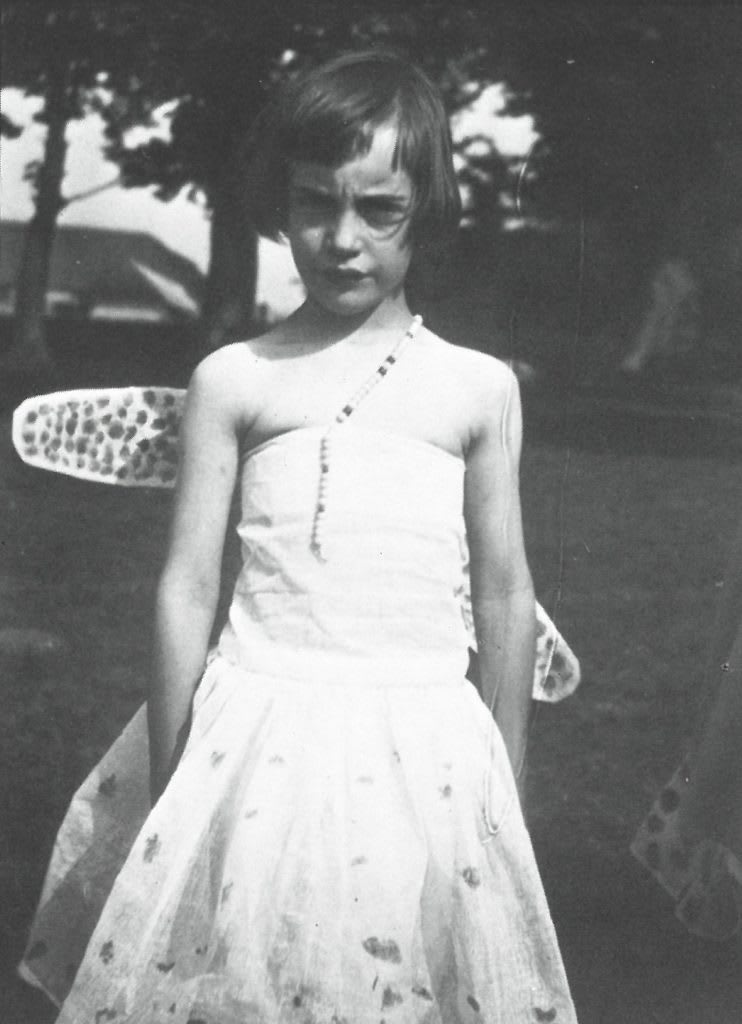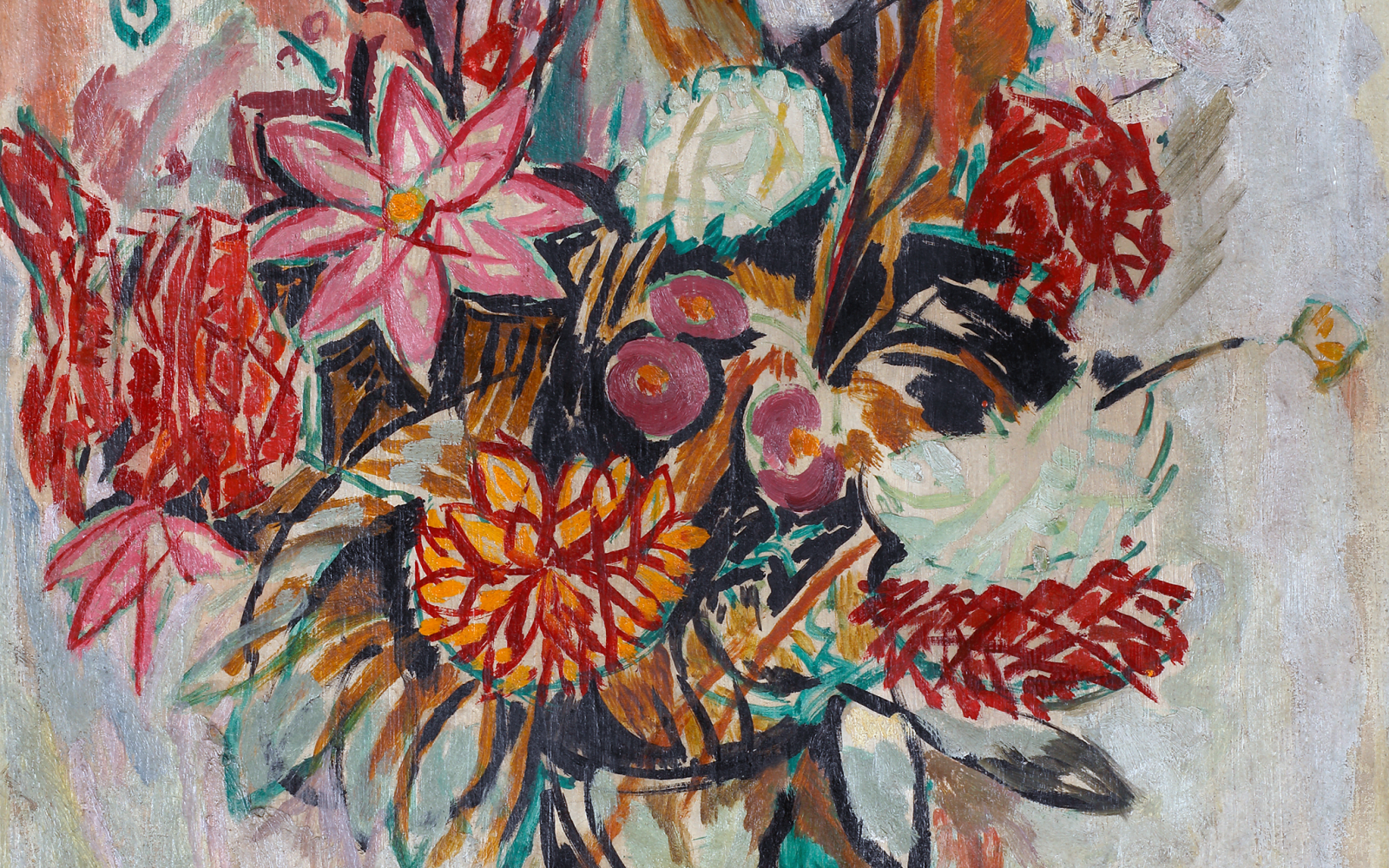Upon their arrival at Charleston, Vanessa Bell and Duncan Grant captured in paint their visitors, friends and family in moments of focused creative activity. Our current exhibition Charleston: The Bloomsbury Muse presents a selection of these portraits which detail the range of artistic ventures pursued at Charleston during and between the two World Wars.
These portraits are a reminder of the continual ebb and flow of guests at Charleston. One individual who grew up immersed within this interconnected stream of visitors was Angelica, Vanessa and Duncan’s daughter, who was born at Charleston on Christmas day in 1918.
At Charleston, Angelica was engaged in a world with no creative constraints. Sewing, weaving, singing and painting all came naturally to the youngest member of the Charleston household. So much so indeed that it has been retrospectively asserted that Angelica was cursed with being ‘too gifted’ at everything and anything she turned to, to the point she was never able to settle on one art.[1]
Vanessa's encouragement of such artistic pursuits is evident in her own portrayals of her children. This portrait of Angelica weaving at her loom [fig 1] captures Charleston as a place of creation, collaboration and innovation. Sarah Milroy, co-curator of the first major retrospective of Vanessa Bell, asserts that Vanessa 'seems to have experienced her children more as creative peers than as dependants.'[2]
The children were indeed encouraged to contribute towards the ongoing decoration of the house and this painting embodies Vanessa's delight in industrious intergenerational collaboration, which Charleston facilitated through its numerous studios and expansive wall space. For example, the iconic 'wallpaper' mural [fig.2] which still decorates each wall in the dining room at Charleston was designed by Duncan and Vanessa but executed with the help of both Angelica and Quentin in the 1940s.
‘The Studio was the citadel of the house, the sanctuary in which I spent the most treasured hours of my life’ – Angelica Garnett
The spirit of collaboration infiltrated almost every aspect of Charlestonian lifestyle. David Garnett, Angelica's future husband, recalled Angelica's birth in his memoir, stating that even 'the question her name became the subject of continual debate… All Bloomsbury sent for suggestions.'[3]
This cast of strong characters maintained a scarcity of boundaries and surplus of freedom which later instilled in Angelica a sense of displacement, which she was to articulate in her autobiography Deceived with Kindness. Whilst the 'elders' went about their day 'in their own dreamlike fashion' - to use Angelica's words - she found comfort in the studio at Charleston.[4]
‘The Studio was the citadel of the house, the sanctuary in which I spent the most treasured hours of my life’ – Angelica Garnett [5]
In this painting, Angelica is depicted by Vanessa in the studio. Absorbed in reading, she certainly appears content and seemingly unaware of her viewer. She seems equally engrossed within her surroundings; rows of books line the back wall which add depth to the composition. Vanessa adds further perspective in the foreground through a still life arrangement consisting of a vase of flowers and artichoke leaves alongside an open book and sewing materials on a bold floral fabric.
In this instance, Vanessa fuses decorative design and fine art through the foregrounded presence of Duncan's textile designs. The two armchairs depicted here are covered in Duncan's fabric designs for Alan Walton Ltd, which were used for the upholstery in the music room at the Lefevre Gallery.
We are delighted to exhibit both of these paintings by Vanessa in our current exhibition Charleston: The Bloomsbury Muse, on view until 10th November 2021.
[1] Garnett, H. (2018) 'Darren Clarke Talks to Henrietta Garnett about her Mother's Life', Charleston Press (No. 1),8 September 2018 - 6 January 2019, p. 66.
[2] Milroy, S. (2017) 'Some Rough Eloquence' in Milroy, S. (ed). Vanessa Bell. London: Philip Wilson Publishers, p. 29.
[3] Garnett, D. quoted in Garnett, H. and Clarke, D., 'Darren Clarke talks to Henrietta Garnett about her Mother's Life', Charleston Press (No. 1),8 September 2018 - 6 January 2019, p. 66.
[4] Garnett, A. (1984) Deceived with Kindness. Oxford: Oxford University Press, p. 97.
[5] Garnett, A. (1984) Deceived with Kindness. Oxford: Oxford University Press, 1984, p. 97.













